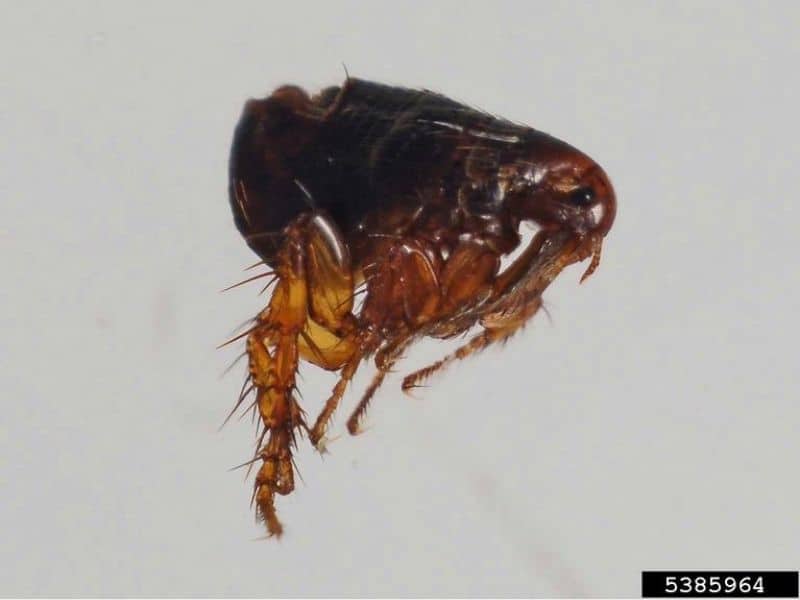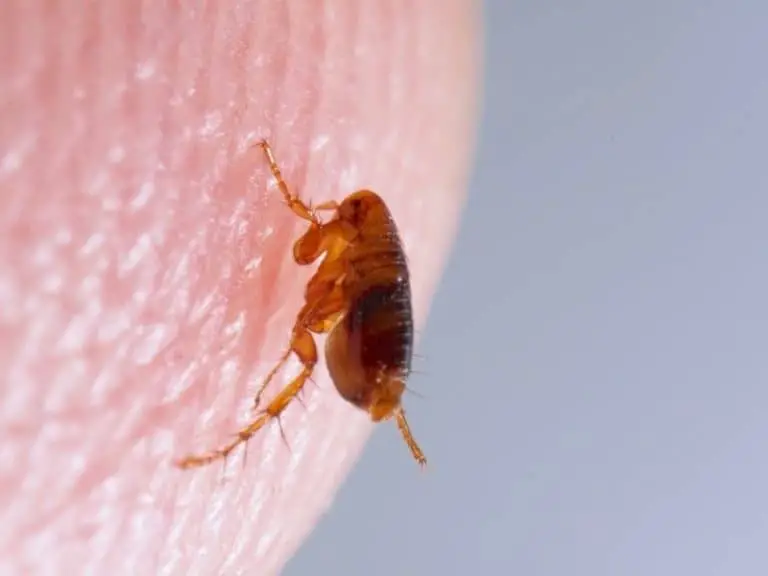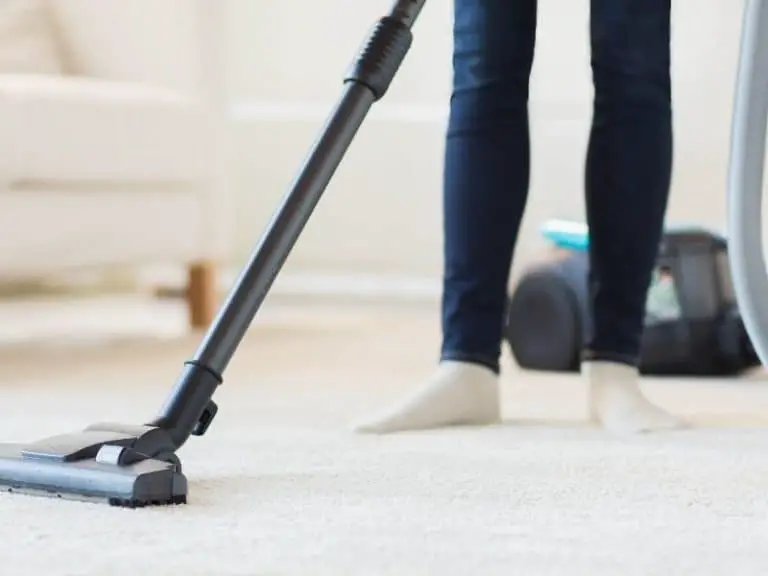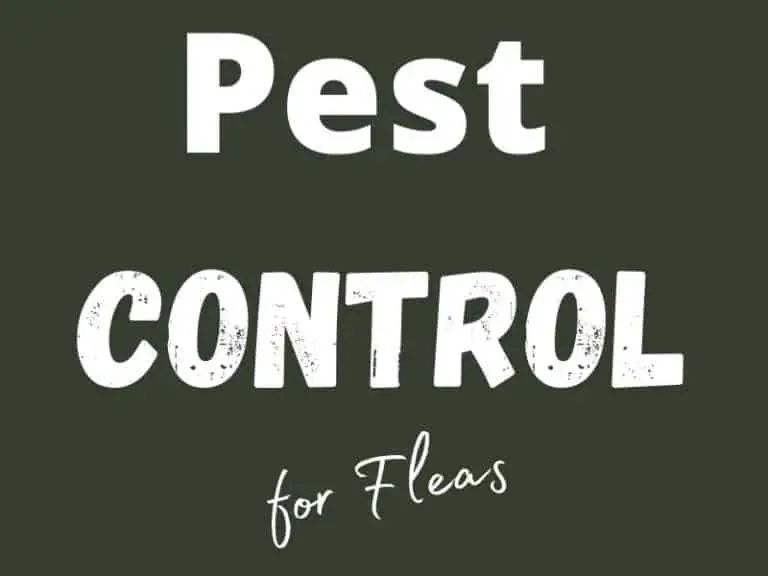Can You Guess How Many Times Can One Flea Bite?
The flea, a small insect only one-half to one-eighth of an inch, can cause a big problem with its annoying bite. The damage it produces spurs us to ask how many times a single flea can bite you in one day.
One flea is able to bite you a maximum of 400 times within one day. Over 70% of all fleas bite in the first hour. They can live for about one hundred days; thus, one flea can bite you 40,000 times in its lifetime. They generally bite dogs and cats, but they also bite humans opportunistically.
As if that is not enough, a pair of breeding fleas could produce up to 500 to 2,000 additional fleas in their lifetime. To prevent such a biting spree and spare you much suffering, you need to learn about the life and habits of fleas in order to protect yourself, your pets, and your family.
How Many Fleas Can Bite in One Day If You Have an Infestation?
Depending on the level of infestation, dogs can suffer as many as 8,000 to 120,000 bites per day from a flea infestation; you can share these bites with your dog if the fleas are also biting you.
The number of fleas in a dog that can be considered an infestation has not been determined. However, an infestation could be as few as 20 fleas to a high number of 300 fleas. Not all these fleas may bite you if you have a dog, because the dog is their natural host.
After mating, the female flea can already lay her eggs in just two days. Within 4 to 9 days, she can lay a daily number of 27 eggs or more on your pet’s fur. The larvae will hatch after 5 to 11 days.
In cocoons, the pupa can stay for several weeks or up to many months before they come out as adults. The adults can feed almost immediately upon emergence.
A female flea can produce 40 to 50 eggs per day for approximately 50 days and can produce a total of 2,000 eggs within her entire lifetime. It can produce a minimum number of 54 adult fleas within a matter of a few weeks.
Thus, if you only have two breeding fleas when your infestation began, your flea population could already easily be 56 adult fleas after a month or so. If half of these new adults are females, then they will produce the same number of new adult fleas after approximately 50 days.
If there are adult 20 fleas in your dog and each flea can bite 400 times daily, your dog can be bitten 8,000 times per day. If the infestation is as high as 300 fleas, your dog could be bitten a staggering 120,000 times per day. If the fleas are also biting you, you could share this number of bites with your dog each day.
Flea Bites on Humans: A Real Problem

Fleas are a problem for humans due to their capacity to bite many times in only a single day.
What are flea bites and why are they troublesome?
Fleas are brown, wingless, and minuscule insects that are considered external parasites because they bite their host’s skin in order to suck and feed on their blood.
When we think about fleas, we usually associate them with our pet dogs and cats. These domestic animals are the main hosts of fleas, because their fur is an ideal place for them to hide, live on, and breed.
However, as we have said, fleas also bite people. They will not stay or live on your skin, but they can and do bite and feed on you. Fleas are among the highest jumpers in the animal kingdom; when they jump, they can reach up to more than one foot high.
For something so small, this is no small feat. In this way, fleas can easily get on to your skin and off again whenever they please.
Since fleas are usually found on the ground and on your pets, whenever they bite humans, they often bite around the legs, ankles, and feet. If the flea population goes unchecked, however, they can spread all over your body and can bite anywhere.
People who have dense hair growth on the chest and legs can become more susceptible to flea infestation.
Flea bites look like very small red spots and are very itchy. They are usually seen in groups of 3 to 4 which are sometimes aligned. In addition, when the bite wound starts to heal, a small scab will form in the middle of a light red-colored halo. Many flea bites, however, cause no reaction on the skin and could become unnoticed.
Humans are only secondary hosts for fleas. Humans are not ideal as a host due to their relatively bare skin compared to the furred skin of dogs and cats, which provide shelter and protection, as well as a good breeding place.
As humans are only opportunistic hosts, adult fleas that need to feed but have not yet encountered their more suitable hosts will choose to bite a human to sustain themselves. If a human happens to pass by a new adult flea that has just come out of its cocoon, they may be the first option for the flea’s first blood meal.
Symptoms, Deleterious Effects, and Risks of Flea Bites
Flea bites may range from insignificant to severe. Flea bites can also transmit diseases. It has several symptoms which can turn into serious complications for people at risk.
Symptoms of flea bites
Flea bite symptoms include the following:
- Hives
- Itching
- Rashes
- Swelling
- Pain
- Irritation
Most of the time, however, flea bites are only a nuisance that causes no lethal or life-threatening symptoms.
Complications of flea bites
Two primary complications arise from the bites of fleas. These are the following:
- secondary bacterial infections
- allergic reactions.
If the bite site is scratched, this could start a secondary bacterial infection. An infection coming from a flea bite may have symptoms associated with bacterial diseases. The affected individual could have extreme pain in the bites site, have swollen glands, and develop excessive redness in the bite area. If these symptoms arise, you should consult a physician.
Fleas also transmit several diseases through their bite, such as the following:
- cat scratch fever
- typhus
- plague
- spotted fever
The bites may also cause a bad reaction in small children as well as people who develop an allergic reaction to them. Allergic reactions have symptoms that include the following:
- nausea
- difficulty in breathing
- swelling of the face or lips
- blister reactions
If these allergic reactions arise, medical attention should be immediately sought.
The sensitivity of individuals to flea bites vary. Sometimes, only a particular person seems to be always bitten and not others. Children below the age of 10 are usually more sensitive compared to adults and older individuals, because desensitization usually occurs with time and age.
Children can produce allergic reactions characterized by chronic and recurrent small and red bumps on their skin. Infections in children due to flea bites can show symptoms such as fever and warm, raised bumps that may be fluid-filled.
Risk factors for flea bites include the presence of rodents, pets, and livestock in and around your home.
Detecting a Flea Infestation

The presence of fleas in your home can be detected by several means. Having a pet makes it easy to see if you have a flea infestation because the fleas will tend to stay on and around your pet.
As your flea infestation grows and the flea population multiplies, the fleas can begin to stay and live in your bedding, your carpets, in nooks and crannies around the house, and on the yard.
You can wear white socks and try to walk on your carpet. If you have fleas there, they will appear on your socks as tiny black spots that look like bugs.
Even if you do not have pets, you can still experience a flea infestation. They can come from the pets of other people and from the yard. Fleas like staying in areas with tall grasses as well as shaded areas near storage buildings, woodpiles, and decks.
If you have a bad flea infestation in your yard, you will likely get red, tiny bites on your skin, especially the legs, after spending some time in your yard.
You can easily differentiate a flea bite from a mosquito or bed bug bite. Mosquito bite areas are characterized by larger bumps.
Meanwhile, bed bug bites only occur during the night, when the bedbugs come out from carpets and mattresses to bite humans as they sleep. Flea bites are most often found on the legs, ankles, and feet, while bedbug bites are located on your upper body.
Bed bug bites are characterized by tiny dark red spots found on the hands, arms, face, and neck. Bed bug bite spots are found in clusters or lines, just like flea bites.
Treatment of Flea Bites
Flea bites may resolve themselves without any treatment, as long as complications do not arise. To stop them, the fleas must be eliminated, because the infestation will only worsen with time if you do not kill the fleas.
Symptoms can be relieved by over-the-counter anti-histamines and anti-itch creams. To avoid the worsening of symptoms, the bite site should not be scratched.
Medications that have been used to treat and relieve flea bites include the following:
- cortisone
- vinegar
- calamine lotion
- tea tree oil
- anti-allergy creams
- anti-itch creams
These treatments relieve the itch so that you would not have the urge to scratch the bite site.
In babies, flea bites can be treated by washing with soap and water, applying anti-histamine cream, and cutting the nails of the child to prevent scratching of the bite area.
In pets, you can get rid of fleas by using the following:
- anti-flea shampoo
- anti-flea powder
- flea collar
- various anti-flea medications from your pet’s veterinarian
You can also treat your home and remove fleas by the following methods:
- vacuuming the carpets and disposing of the sealed vacuum bags
- washing beddings in hot water and using the dryer’s highest heat settings
- using insecticides
- using flea bombs
- contracting the services of pest control experts
Related questions
How does a flea bite cause a red bump on the skin?
The red bump the results from the bite of a flea is the skin’s allergic reaction to the flea’s saliva.
Do fleas bite during the night?
Fleas will bite every time they have the chance to do so. This is in stark contrast to bedbugs, which only usually feed every three days and which usually feed during nighttime. Bedbug bites also show a regular pattern.
Medical Disclaimer: TheHomePestControl is a digital publisher and does not offer personal health or medical advice. The contents of this website are not intended to substitute for professional medical advice, diagnosis, or treatment.
Affiliate Disclaimer: As an Amazon Associate, I earn from qualifying purchases made on our website. If you make a purchase through links from this website, I may earn a commission at no additional cost to you.






